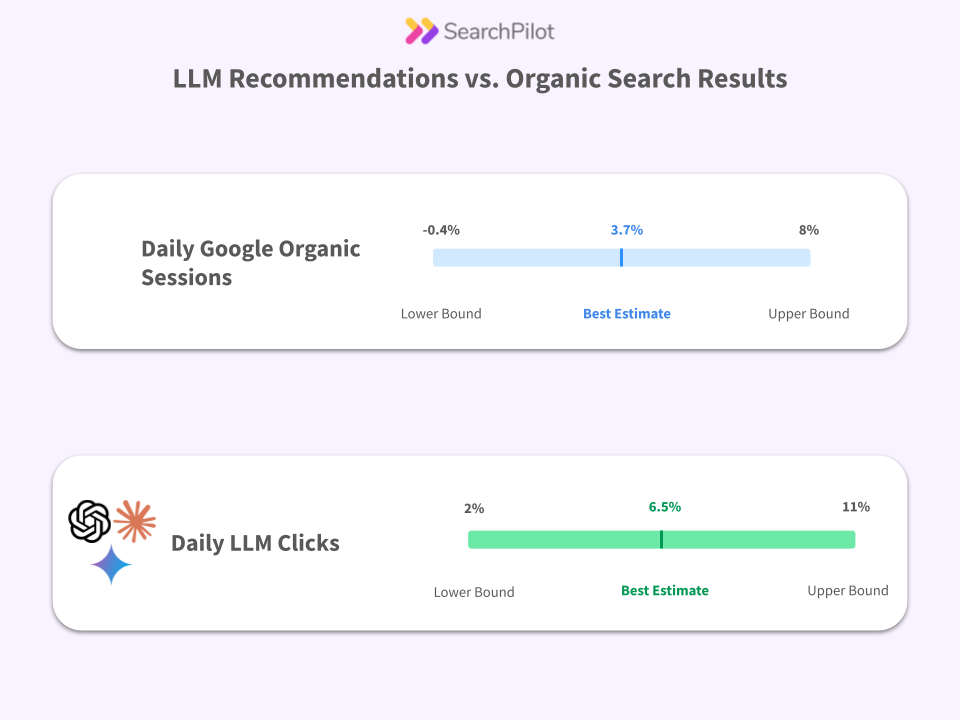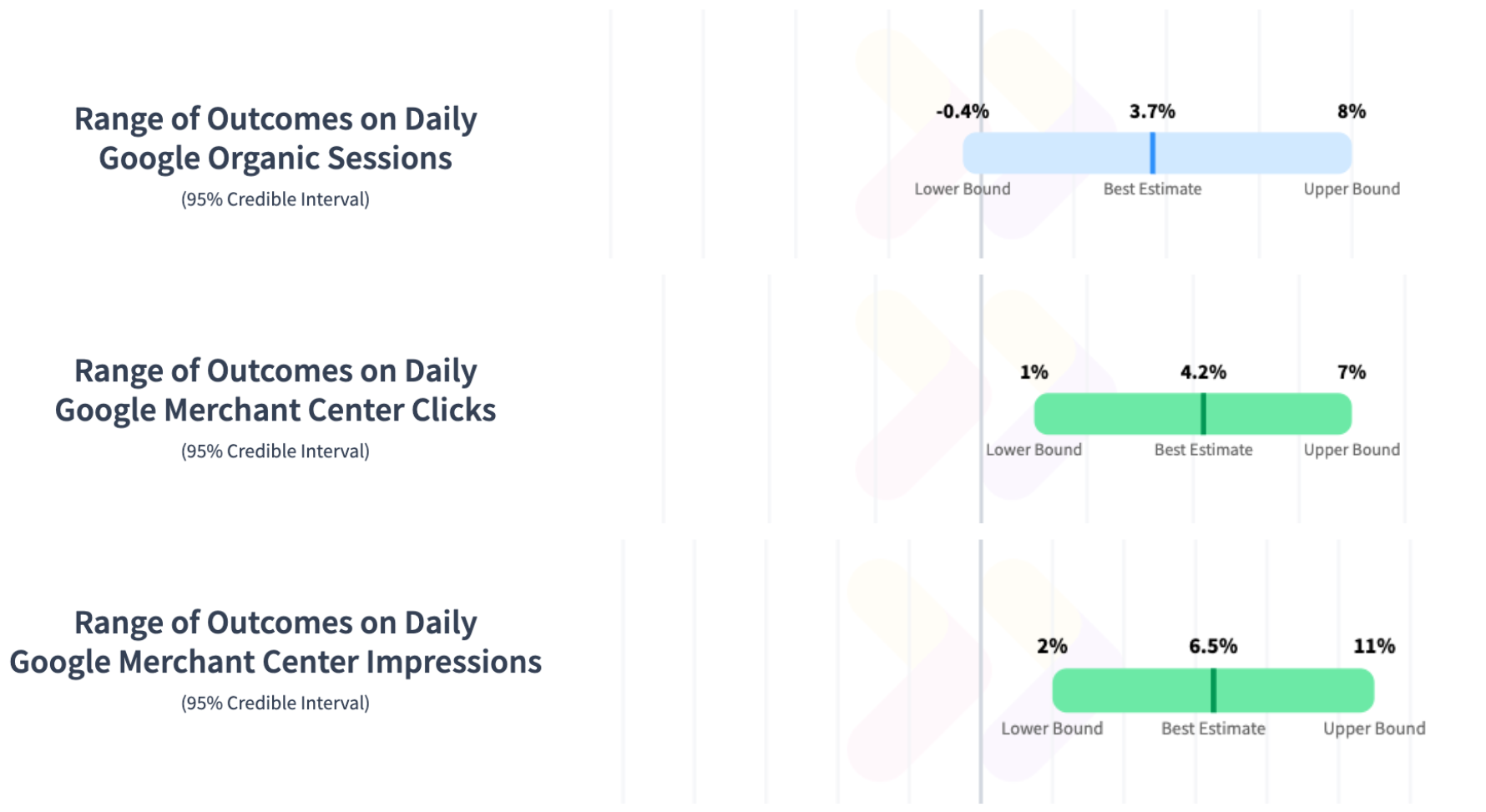In an ideal world, your SEO and product teams should be in perfect alignment.
Your SEO team is working to get more visitors to your site. Once they’re in the door, your product team ensures they have the best possible experience. If both teams deliver, the combined impact on your ROI can be huge.
While both teams should be focused on your company goals, they need to keep in mind how their projects overlap. Your product team has a role to play in impressing Google as well as users. At the same time, your SEO team can’t only focus on bots. In practice, however, this shared focus can easily slip from view. Your teams get caught up in their own priorities, leading to conflict over who takes precedence.
But you needn’t settle for your SEO and product teams pulling in different directions. By bringing a product development approach to your SEO efforts, you can keep everyone on the same page.
And it all starts with testing.
Testing is at the heart of a product development approach. Rigorous and consistent testing helps you hone in on your customers’ needs and find the most effective ways to meet them. And it should be a key focus for both your product and SEO teams.
In this post, we’ll look at how a shared approach to testing can help your product and SEO teams stay aligned. We’ll begin by looking at one of the most common product-based website tests. Then, we’ll explore the less familiar world of SEO A/B testing. Finally, we’ll show you how you can achieve the benefits of both with full-funnel testing.
What is CRO testing?
First, let’s look at how product-based testing works. For websites, this usually means conversion rate optimization (CRO) testing.
CRO testing is a structured way to find out what impact a specific website change will have on your conversion rate. It should form a key part of your product development strategy.
By testing website changes on real users before you roll them out across your site, you won’t have to rely on your best guesses. Instead, you’ll have real data to prove the value of any updates.
So, how does CRO testing work in practice?
First, you need a hypothesis. (Yes, this is business, not science. But when it comes to product testing, a little bit of science goes a long way.)
Let’s say you’re getting lots of traffic to your blog, but very few of these visitors are converting. This suggests that your CTAs may be the issue.
On the basis of this hypothesis, you design a new CTA and position it on the sidebar of every blog post. Then, you serve this new version of your blog page to some of your visitors, while the rest get the old version.
Finally, you look at the data. Is your conversion rate better on the new version compared to the old one? If the answer is yes, you can roll it out across your site. If not, it’s back to the drawing board.
The same basic concept can be applied to any user-facing element of your website. From your page layouts to your product copy, anything the user sees on your site can be optimized with CRO testing.
What about SEO testing?
SEO testing is less widely adopted than CRO testing. In fact, some business leaders aren’t aware that SEO testing is possible in the first place.
And when SEO testing is implemented, it often uses a “try it and see” approach. You make changes to your site based on widely shared assumptions about what Google is looking for. Then, you wait to see if they have the impact you’d expect.
Obviously, this is a time-consuming and risky approach. Worse, it doesn’t work. If your organic traffic plummets, did one of your site changes cause it? Was it just a seasonal shift — or something Google did? If it was one of your changes, which one was it? There’s no way to tell.
This is where integrating a product development approach comes in. Instead of twisting the dials and seeing what happens, you can adopt a similar model to your product-based testing. You develop a hypothesis and test it prior to permanently deploying it across your site.
To do this, you need to separate pages, rather than users.
Instead of delivering different versions of the same page, as in your CRO tests, you identify a set of similar pages on your site. Then, you change half of them (the variant), while keeping the others the same (the control). You can then compare the impact on search traffic between variant and control pages.
The benefits of adopting this approach are extensive. By identifying the most impactful changes, you won’t waste time on the ones that don’t work. And by eliminating the risk of changes that harm your rankings, you’ll be able to deliver consistent, measurable improvements to your organic traffic.
If you’d like to take a closer look at how SEO A/B testing works, read our in-depth guide.
CRO testing vs. SEO testing: How do they compare?
Before we explain how you can integrate your CRO and SEO testing, let’s break down how they compare in more detail.
The similarities
- You can test similar things. Some site changes benefit both SEO and CRO. For instance, improving your internal linking structure doesn’t just help Googlebot navigate your site — it lets your users move around more easily, too. Testing this change can show an impact on both search rankings and conversion.
- They (should) share the same design. When implemented properly, the same structure underpins both types of tests. From hypothesis to test to deployment, you are following the same logic. In both cases, you will be making any changes on the basis of clear, verifiable data.
The differences
- They use different methods. In CRO testing, what matters is how users interact with a page. So, you can test by sending users to different versions of the same page. But for SEO testing, splitting by users won’t work — what matters is how Googlebot interprets the page. To do true SEO testing, you need to split the pages, not the users.
- They have different goals. Ultimately, CRO testing is about where your users end up once they’ve landed on your page. SEO testing is about what’s going to get them there in the first place. And while we’d like to imagine a future in which those things coincide, we aren’t there yet.
How can you apply a product testing approach to your SEO efforts?
SEO testing and CRO testing have more in common than many people realize. Both benefit from adopting an integrated product development approach that focuses on making continuous refinements based on verifiable test data.
But to truly bring the benefits of product testing to your SEO efforts, you need to build both types of tests on a shared foundation.
Here at SearchPilot, we’ve developed an approach that directly integrates SEO and CRO testing. We call it full-funnel testing.
Here’s how it works.
Full-funnel testing begins by splitting pages into control and variant groups, as in the SEO testing process described above. The changes you want to test are implemented on the variant pages, while the control pages are unchanged.
Once the SEO test has enough data to produce a statistically significant outcome, SearchPilot’s testing platform automatically pivots to CRO testing. At this point, visitors are randomly assigned to the new or old version of the page, allowing you to observe the impact on conversion rates.
So, you now have both SEO and CRO testing working in direct alignment. You can test for organic traffic uplifts and improved conversion rates all as part of the same testing program, and get the full picture of how any changes will impact your business.
Full-funnel testing in action
Adopting a product development approach can help your SEO and product teams stay on the same page — and comprehensive testing should be your first step.
With SearchPilot’s full-funnel testing functionality, you can combine product and SEO testing into a single testing program. You’ll have the data you need to drive traffic and improve conversions.
Won’t believe it until you see it? That’s okay, we understand — it does sound too good to be true. Request a demo today and one of our expert team will give you an in-depth walkthrough of how the platform works.



